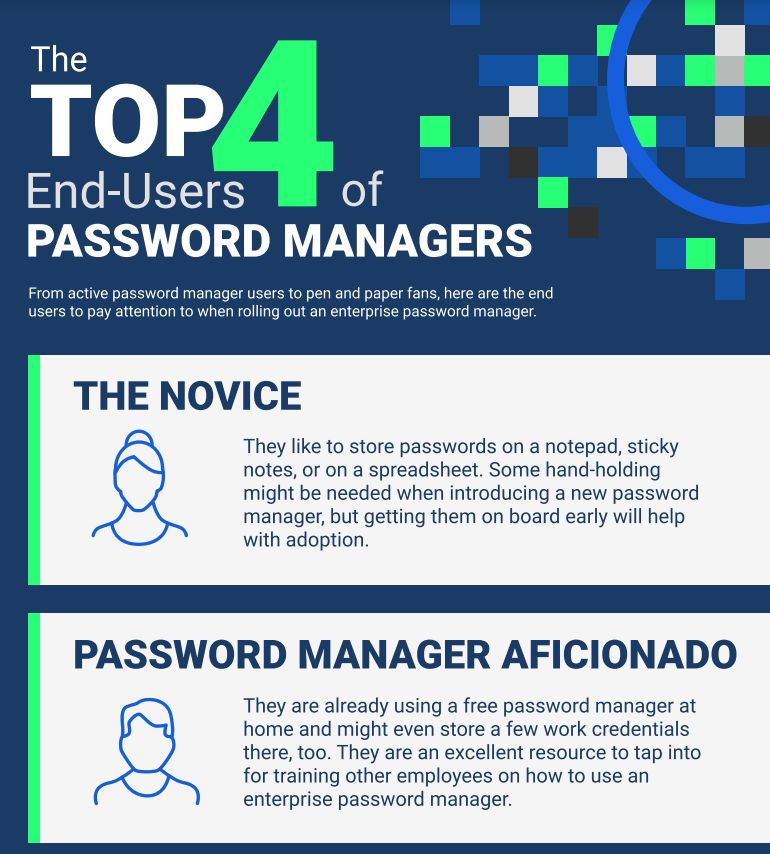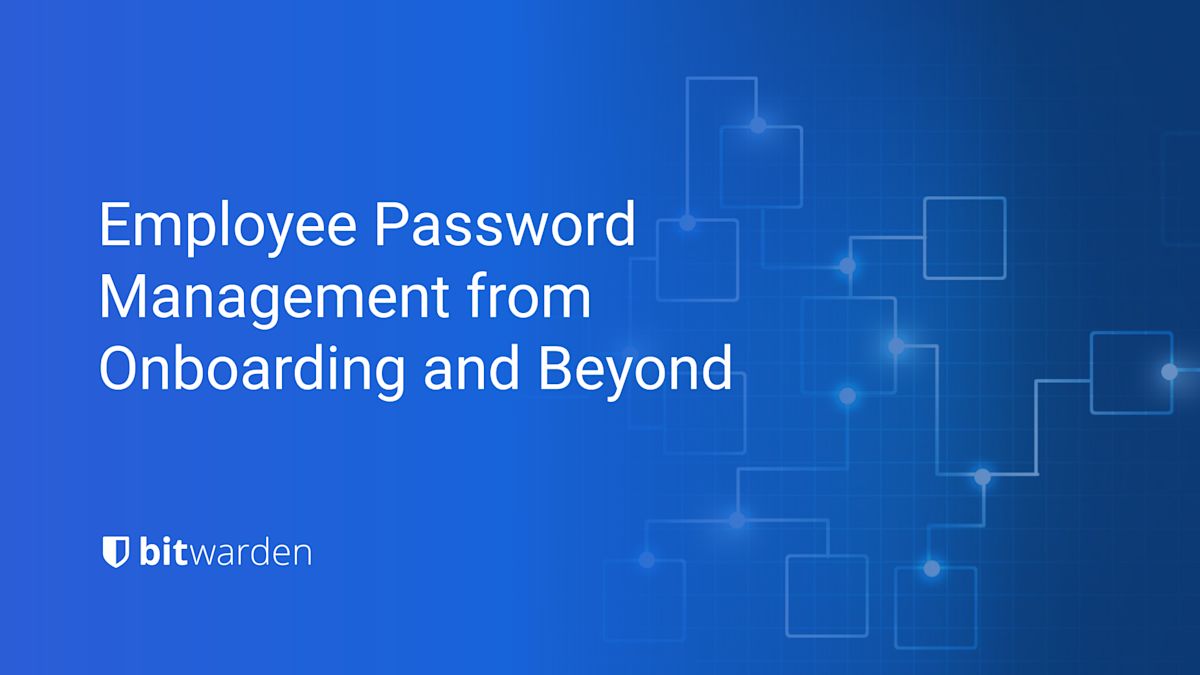- Blog
- Here’s What Employee Password Management Looks Like from Onboarding and Beyond
Employee password management starts on the first day of onboarding and continues through career advancement and succession. When introducing a new employee to company software and applications, it helps to know their familiarity with using password managers to store and share password credentials.
To minimize critical cybersecurity risks and protect business data, many companies initiate the onboarding process with a password manager to grant employees access to necessary login credentials.
Some companies also use Single Sign On to streamline access to select enterprise-wide systems, but this coverage does not always extend to employee- or team-specific systems. Shared team password credentials might then be distributed through less secure methods such as sticky notes, email, or shared documents for speed and efficiency. A password manager fills this gap, especially when embraced by employees, as it enables them to safely share credentials.
How can a security-minded company successfully introduce a password manager during employee onboarding and ensure that good password hygiene remains throughout the entire employee lifecycle? It starts by understanding your employees and building an effective company password management program to span their tenure with the company.
Who are the Most Common Employee Password Manager End-Users?
Employees face pressure to be successful at work, and sometimes that means they need to quickly share passwords and other sensitive information to resolve an issue. Some might already be using a personal password manager, and others might just use pen and paper.
The four most common end-users you should plan for when introducing a password manager in your organization include:
The Novice
Password Management Aficionado
The Team Lead
Executive User
Top 4 End-Users of Password Managers

Take a closer look at these end-users and what you’ll need to consider when rolling out your password manager and identifying training requirements.
Continuing Password Management Throughout the Employee Lifecycle
The employee lifecycle for password management comprises three stages:
Onboarding
Succession and Promotion
Offboarding
Onboarding
Onboarding presents a great opportunity to get employees started with proper digital security practices like a password manager. When a company engages new employees, faster onboarding means faster productivity. From an employee’s perspective, the less friction they have in accessing and setting up new tools, the sooner they can make a good first impression.
NOTE: For current Bitwarden Teams and Enterprise administrators, feel free to check out a more detailed technical paper on Employee Onboarding and Succession.
Succession and Promotion
As employees move into new roles and responsibilities, they might need to transition software ownership. In other cases, like for a law firm or services company, employees handle multiple projects simultaneously and constantly hand off credentials to others. Managing several passwords across numerous projects, users, devices, and time zones goes from days to hours, or even minutes, with a password manager.
Offboarding
Provisioning and deprovisioning user access to credentials remains time-sensitive during employee offboarding. A shared spreadsheet of logins and passwords just won’t cut it. Centralizing password management ensures that work transitions smoothly to other employees, and that shared passwords remain secure and accessible.
Your Guide to Password Management Throughout all the Employee Lifecycle Stages
Successful employee password security management relies on reinforcing best practices and also knowing how to customize training around the different types of end-users.
We put together this guide to help you understand:
How password management needs change throughout each employee lifecycle stage
An overview of workplace password managers
The differences between password managers, identity and Access Management (IAM) systems, and Identity Providers (IdPs)
Enterprise Password Management Throughout the Employee Lifecycle
Get Started with Bitwarden
Ready to try Bitwarden? Keep your team safe online by signing up for a free business trial, or sign up for a free individual account.
Editor's Note: This article was originally written on April 20th, 2021 and was updated on July 13th, 2022.
